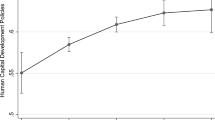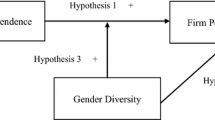Abstract
Women owners of small business are known to be better informed about issues relating to starting their own business compared to their male counterparts. Women spend more time conducting market research and have historically spent more time accessing finance because of gender bias within the lending industry. Due to their previous employment history many women have better administrative skills over men which should translate to women having better basic business management knowledge and a higher level of basic business competencies. Research conducted on a sample of 270 business owners found that whereas women rated themselves as more competent than men on a number of issues when they first started their business, they were no more inclined than men to pursue further business skills development or training once they were actively operating their business. Further, both women and men believed that they gained sufficient managerial experience ‘on-the-job’ not to warrant professional assistance in most business competencies.
Similar content being viewed by others
References
Australian Bureau of Statistics (2005). Characteristics of small business: Catalogue 8127.0. Canberra: AGPS.
Barry, H., & Milner, B. (2003). SMEs and electronic commerce: A departure from the traditional prioritisation of training? Journal of European Industrial Training, 26, 316–326.
Bird, B. J. (1989). Entrepreneurial behavior. Illinois: Scott, Foresman & Company.
Birley, S. (1996). Start-up. In P. Burns & J. Dewhurst (Eds.), Small business and entrepreneurship (2nd edn.) (pp. 20–39). Basingstoke: Macmillan.
Birley, S., & Westhead, P. (1994). A taxonomy of business start-up reasons and their impact on firm growth and size. Journal of Business Venturing, 9, 7–31.
Brockhaus, R. H. (1982). The psychology of the entrepreneur. In C. A. Kent, D. L. Sexton, & K. H. Vesper (Eds.), Encyclopedia of entrepreneurship (pp. 39–57). New Jersey: Prentice-Hall.
Brush, C. G., & Hisrich, R. D. (1991). Antecedent influences on women-owned businesses. Journal of Managerial Psychology, 6, 9–16.
Carter, S., Anderson, S., & Shaw, E. (2001). Women’s business ownership: A review of the academic, popular and internet literature. A Report to the Small Business Service. London: SBS.
Cromie, S. (1987). Similarities and differences between women and men who choose business proprietorship. International Small Business Journal, 5, 43–60.
Curtis, D., & McKenzie, P. (2001). Employability skills for Australian industry: Literature review and framework development. Adelaide: South Australian Centre for Lifelong Learning and Development: Flinders University.
Daniel, T. A. (2004). The exodus of women for the corporate workplace to self owned businesses. Employment Relations Today, 30, 55–61.
Darch, H., & Lucas, T. (2002). Training as an e-commerce enabler. Journal of Workplace Learning, 14, 148–155.
Department of Premier and Cabinet (2002). Active ageing taskforce: Report and recommendations. Western Australia: Government of Western Australia.
Devins, D., & Johnson, S. (2002). Engaging SME managers and employees in training: Lessons from an evaluation of the ESF Objective 4 Programme in Great Britain. Education and Training, 44, 337–370.
Encel, S. (2003). Age can work: The case for older Australians staying in the workforce. Sydney: Australian Council of Trade Unions and the Business Council of Australia.
Forum of Labour Market Ministers (2002). Older workers in the labour market: Employment challenges, programs and policy implications. Winnipeg: Forum of Labour Market Ministers.
Gibb, A. (1997). Small firms’ training and competitiveness: Building upon the small business as a learning organisation. International Small Business Journal, 15, 13–20.
Hisrich, R. D. (1986). The woman entrepreneur: Characteristics, skills, problems, and prescriptions for success. In D. Sexton & R. Smilor (Eds.), The art and science of entrepreneurship (pp. 61–84). Massachusetts: Ballinger.
Ibrahim, A., & Soufani, D. (2002). Entrepreneurship education and training in Canada: A critical assessment. Education and Training, 44, 421–430.
Jennings, P., & Beaver, G. (1997). The performance and competitive advantage of small firms: A management perspective. International Small Business Journal, 15, 63–75.
Kalleberg, A. L., & Leicht, K. T. (1991). Gender and organizational performance: Determinants of business survival and success. Academy of Management Journal, 34, 136–161.
Lee-Gosselin, H., & Grisé, J. (1990). Are women owner-managers challenging our definitions of entrepreneurship? An in-depth survey. Journal of Business Ethics, 9, 423–433.
McGregor, J., & Tweed, D. (2001). Gender and managerial competence: Support for theories of androgyny? Women in Management Review, 16, 279–286.
McGregor, J., & Tweed, D. (2002). Profiling a new generation of female small business owners in New Zealand: Networking, mentoring and growth. Gender, Work and Organization, 9, 420–438.
O’Dwyer, M., & Ryan, E. (2000). Management development issues for owners/managers of micro-enterprises. Journal of European Industrial Training, 26, 345–353.
Orser, B., & Hogarth-Scott, S. (2002). Opting for growth: Gender dimensions of choosing enterprise development. Canadian Journal of Administrative Sciences, 19, 284–300.
Roffey, B., Stanger, A., Forsaith, D., McInnes, E., Petrone, F., Symes, C., et al. (1996). Women in small business: A review of research. Canberra: Australian Government Publishing Service.
Sambrook, S. (2003). E-learning in small organisations. Education and Training, 45, 506–516.
Smallbone, D. (1990). Success and failure in new business start-ups. International Small Business Journal, 8, 34–47.
Still, L. V., & Walker, E. A. (2006). The self-employed woman and her business: A profile. Women in Management review (in press).
Stockdale, R., Rowe, M., & Walker, E. A. (2004). Is the owner the business? Internal influences on e-commerce adoption in small businesses. Proceedings of the 5th Webcentre Conference 25–26th November. Perth: Edith Cowan University.
Storey, D. (1994). Understanding the small business sector. London: Routledge.
Storey, D. (2004). Exploring the link, among small firms, between management training and firm performance: A comparison between the UK and other OECD countries. International Journal of Resource Management, 15, 112–130.
Vinten, G. (2000). Training in small and medium-sized enterprise. Industrial and Commercial Training, 32, 9–16.
Walker, E. A. (2001). Small business owners’ measures of success. Unpublished PhD thesis. Perth: Edith Cowan University.
Walker, E. A, & Still, L. V. (2003). Usage and management of business assistance by small business: Time for a rethink? Proceeding of the Australian & New Zealand Academy of Management Conference 2–5th December. Perth: ANZAM.
Walker, E. A., & Webster, B. (2004). Small business smart business. Perth: Small & Medium Enterprise Research Centre, Edith Cowan University.
Watson, K., & Hogart, S. (1998). Small business start-ups: Success factors and support implications. International Journal of Entrepreneurial Behaviour & Research, 4, 217–230.
Webster, B. J., Walker, E. A., & Barrett, R. (2005). Small business and on-line training: Who is willing to participate? New Technology, Work and Employment, 20, 248–258.
Webster, B. J., Walker, E. A., & Brown, A. (2005). Small business participation in training activities. Education + Training, 47, 552–561.
Welsch, H., & Young, E. (1984). Male and female entrepreneurial characteristics and behaviors: A profile of similarities and differences. International Small Business Journal, 2, 11–20.
Winn, J. (2005). Women entrepreneurs: Can we remove the barriers? International Entrepreneurship and Management Journal, 1, 381–397.
Author information
Authors and Affiliations
Corresponding author
Rights and permissions
About this article
Cite this article
Walker, E., Webster, B. Management competencies of women business owners. Int Entrep Manag J 2, 495–508 (2006). https://doi.org/10.1007/s11365-006-0009-9
Published:
Issue Date:
DOI: https://doi.org/10.1007/s11365-006-0009-9




